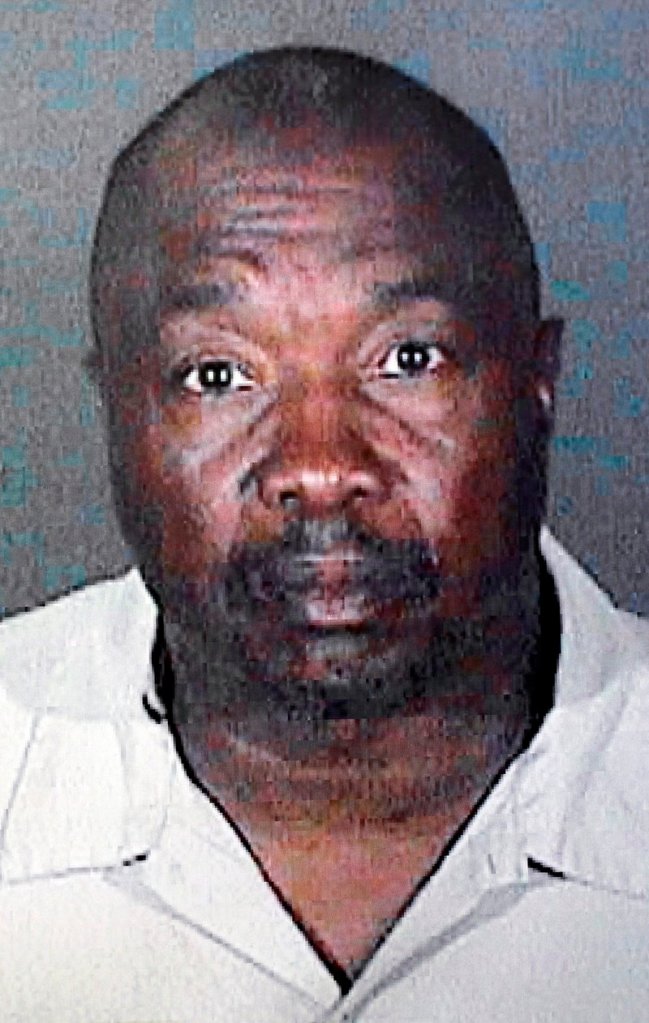LOS ANGELES – The man charged with 10 murders in the Los Angeles “Grim Sleeper” case was arrested at least 15 times over four decades but never sent to state prison despite recommendations of probation officers.
One probation officer urged that Lonnie Franklin Jr. receive a maximum sentence because it was a bad sign that a man in his 50s still committed crimes, court and jail records show.
Franklin, 57, was arrested for burglary, car theft, firearms possession and assaults. But his crimes never were considered serious enough to send him to state prison or to warrant his entry in the state’s DNA database, authorities said.
“He’s danced to the raindrops for a long time without getting wet,” Detective Dennis Kilcoyne, head of the task force investigating the killings, told the Los Angeles Times.
At a Saturday community forum on the killings, city councilman and former police chief Bernard Parks said law enforcement and police should not be faulted for their past handling of Franklin.
“That’s not unusual,” Parks said of Franklin’s short sentences and frequent quick releases. He said jails are “constantly evaluating who can be let go to make room.”
But Parks, who as police chief from 1997-2002 ordered new examination of cold case files and as city councilman in the area of the killings raised a reward of $500,000 before the arrest, said he understands frustration from victim’s relatives and community.
“If people are dead, there is no consolation, there is no excuse,” he said.
Parks said California was slower than many big states in adding property crimes to those where DNA is automatically collected from convicts, and that may have prevented an earlier arrest.
One of the victims was killed in July 2003, when records show Franklin should have been in county jail but was released early because of overcrowding.
Franklin pleaded no contest to receiving stolen property in that case, in which he was arrested at a Glendale mall driving a stolen luxury sport utility vehicle.
A probation officer said it was unusual and disturbing that Franklin was still involved in such crimes at age 50, when most criminals have slowed down.
“If at this age the defendant is still engaging in criminal activities,” the officer wrote, “the community can best be served by imposing the maximum time possible in state prison.”
But Franklin received just a fraction of the maximum sentence — 270 days in jail — and was still released four months early, according to jail data obtained by the Times.
He also narrowly dodged the state DNA database. The following year, all felony convicts were put in the database after California voters passed a measure requiring it.
And despite his long and varied record, Kilcoyne said Franklin did not commit the kind of violent crimes against women that might have drawn the attention of detectives in the Grim Sleeper case.
Franklin was arrested Wednesday on 10 counts of murder and other charges in the deaths of young black women that started in the 1980s, then appear to have stopped, only to resume again 14 years later, sparking the nickname Grim Sleeper.
Franklin’s public defender, Regina Laughney, said it was too early for her to comment.
A key question for investigators will be why the killings apparently stopped for so long.
“These are things that will come out only if the suspect chooses to share them,” Parks said.
But investigators are still considering the possibility that there may have been more victims during the 14-year gap.
Send questions/comments to the editors.



Success. Please wait for the page to reload. If the page does not reload within 5 seconds, please refresh the page.
Enter your email and password to access comments.
Hi, to comment on stories you must . This profile is in addition to your subscription and website login.
Already have a commenting profile? .
Invalid username/password.
Please check your email to confirm and complete your registration.
Only subscribers are eligible to post comments. Please subscribe or login first for digital access. Here’s why.
Use the form below to reset your password. When you've submitted your account email, we will send an email with a reset code.